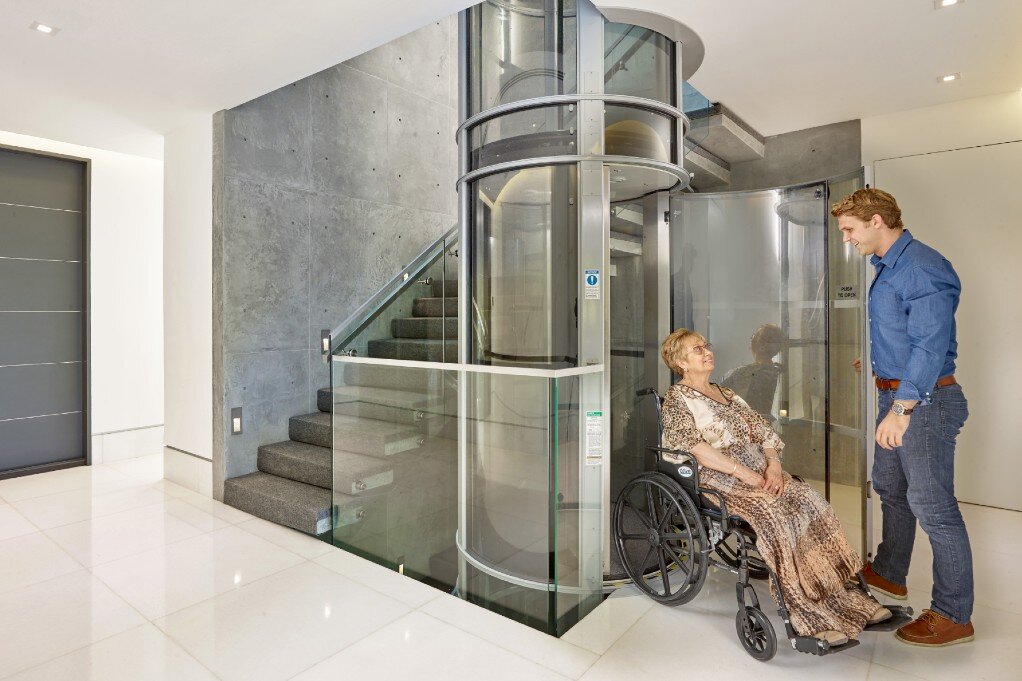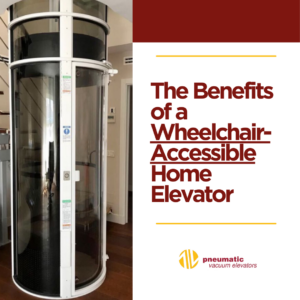In an ideal world, aging gracefully translates to maintaining independence and enjoying familiar surroundings. However, age-related mobility limitations can present significant challenges, particularly when navigating multi-level homes. Traditional seated stair lifts, while effective, might not be suitable for everyone. This article delves into the intricacies of residential standing stair lifts, empowering you to make informed decisions for yourself or a loved one seeking continued home accessibility.
Standing Stair Lifts: A Biomechanical Boon

Standing stair lifts address a specific biomechanical need – the inability to comfortably bend or remain seated for prolonged periods. These innovative devices offer a platform for users to stand upright while utilizing a perching seat for partial support. This design caters to individuals with conditions like:
- Arthritis: The standing position minimizes stress on weight-bearing joints like hips and knees, reducing pain associated with bending or rising from a seated position.
- Balance Disorders: Standing stair lifts can provide a sense of security and stability for individuals with neurological conditions impacting balance.
- Post-Surgical Recovery: These lifts can be a temporary solution for individuals recovering from surgeries that limit bending or weight-bearing activities.
The benefits extend beyond simply overcoming the obstacle of stairs. Here’s a closer look at the advantages from a biomechanical and functional standpoint:
- Improved Blood Flow: Standing promotes better circulation throughout the body, particularly in the lower extremities, which can be beneficial for individuals with circulatory issues.
- Reduced Risk of Falls: The perching seat and safety features like seat belts minimize the risk of falls associated with transferring to or from a seated position on a traditional stair lift.
- Enhanced Energy Levels: Maintaining an upright posture often translates to increased energy levels compared to remaining seated for extended periods.
Understanding the Technology: Straight vs. Curved Tracks
The core technology behind standing stair lifts involves a motorized track system installed alongside the staircase. This track guides a carriage equipped with a platform and perching seat, allowing for smooth and controlled movement. Here’s a breakdown of the two primary track configurations:
- Straight Stair Lifts: These are ideal for linear staircases with no bends or turns. Straight tracks offer a simple and cost-effective solution for navigating single-flight staircases.
- Curved Stair Lifts: Designed for staircases with curves, landings, or multiple turns, curved tracks require custom design and fabrication to precisely follow the curvature of the staircase. This ensures a safe and comfortable ride along even the most intricate staircases.
Beyond Basic Considerations: A Deep Dive into Selection Criteria
Choosing the right standing stair lift requires a nuanced understanding of user needs, staircase configurations, and technological features. Here’s a breakdown of key factors to consider beyond basic cost and type:
- Weight Capacity and Load Distribution: While weight capacity is a crucial factor, it’s equally important to consider how the weight is distributed on the platform. Look for lifts with a design that optimizes stability and minimizes stress on the user’s legs and core.
- Platform Dimensions and User Comfort: The platform size should provide ample space for the user to stand comfortably with proper leg and foot placement. Evaluate if additional support features like adjustable footrests or backrests are necessary for enhanced user comfort and stability.
- Safety Sensor Technology: Advanced safety features like pressure sensors on the platform, obstacle detection systems, and automatic shut-off mechanisms are critical for preventing potential accidents.
- Power Source and Battery Backup: Most standing stair lifts operate on battery power with an automatic charging system. Consider the battery life and recharge time, especially if there are frequent power outages in your area.
- Smart Home Integration: Emerging technologies allow certain standing stair lifts to be integrated with smart home systems, enabling control via voice commands or smartphone applications. This can be particularly beneficial for individuals with limited dexterity or upper body strength.
Pro Tip: Consider the aesthetics of the lift, particularly if it will be a permanent fixture in your home. Several manufacturers offer options for track color and upholstery materials that complement your existing décor.
Installation, Maintenance, and Considerations for Long-Term Use

The installation process typically involves a qualified technician visiting your home to assess the staircase, discuss user needs, and ensure proper measurements are taken. Following the installation, thorough training on operating the lift safely and effectively is crucial.
Regular maintenance is essential for optimal performance and user safety. Most manufacturers recommend routine maintenance checks by a qualified technician, which typically involve inspecting the track, motor, and safety features. Consider including a maintenance plan in your overall budget to ensure the lift operates smoothly for years to come.
The decision to invest in a residential standing stair lift is a significant one. By delving deeper into the technology, user needs, and selection criteria, you can confidently choose a solution that empowers continued independence and enhances the quality of life for yourself or a loved one.
Here are some additional considerations for long-term use:
- Financing Options: Many manufacturers and dealers offer financing plans to make standing stair lifts more affordable. Explore available options and choose a payment plan that aligns with your budget.
- Grant and Tax Credit Opportunities: Government agencies and non-profit organizations may offer grants or tax credits to assist with the cost of accessibility modifications like standing stair lifts. Research potential programs in your area to see if you qualify.
- Future Needs Assessment: Consider potential future needs when selecting a standing stair lift. If the user’s condition is progressive, choose a lift with a weight capacity and feature set that can accommodate potential changes in mobility.
- Resale Value: While a standing stair lift is primarily an investment in continued independence, some models may have a resale value. Research the resale market in your area to determine if this is a factor to consider.
Conclusion: Standing Tall for Independence
Residential standing stair lifts represent a transformative technology for individuals seeking to maintain their independence and navigate their homes with dignity. By understanding the biomechanical benefits, technological advancements, and selection criteria, you can empower yourself or a loved one to continue living a full and independent life at home. Remember, regaining the ability to conquer stairs fosters a sense of control and well-being, allowing you to focus on what truly matters – enjoying life in the comfort of your familiar surroundings.








